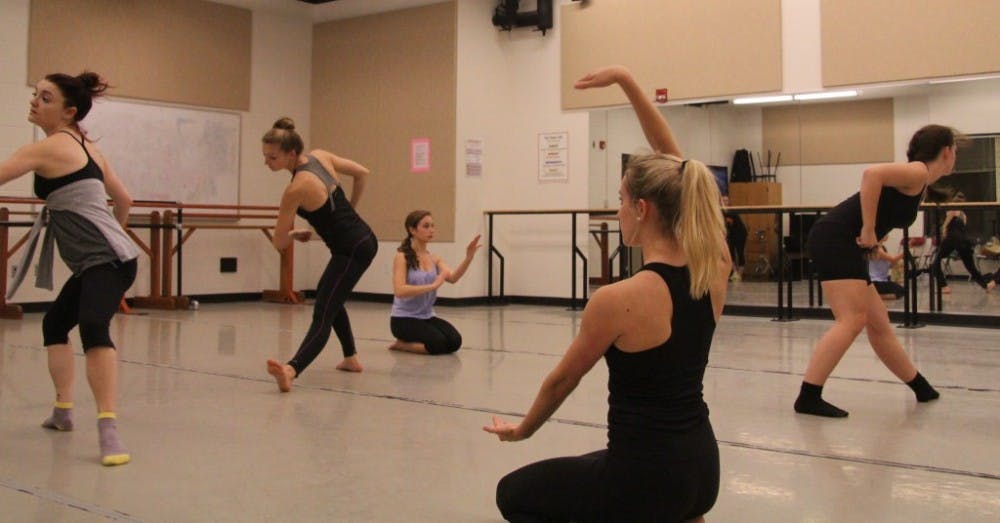Students taking choreography I and II will be performing “Works in Progress Choreography Salon” for a small audience in Studio A in the Center for the Arts Oct. 16 and 17. The purpose of the performance is for students to receive feedback before showcasing the finished piece at the end of the semeseter.
Dance majors are required to take both choreography I and II after completing a course in improvisation. Choreography students begin working on their pieces early in the year and spend the semester focusing on developing a finished product.
Renay Aumiller and Sara Tourek, who teach choreography I and II, focus on the students’ understanding of art’s structure and movement in relation to ideas. Aumiller describes structure as a “complex web,” with several concepts that are interrelated.
Both Aumiller and Tourek emphasized they want the students’ work to be authentic and organic.
“I’m really looking to help them to craft what they have already made. I’m not interested in having them make dances the way I make them, but really honing their skills,” Tourek said.
Junior dance major Caroline Echevarria is taking Aumiller’s choreography class this semester and said her view of choreography has broadened in a short amount of time.
“One of the most important pieces of information I have gained from this class is that there is no right or wrong to the creative process,” she said. “Prior to taking this class, my view of choreography was very black and white, but I’ve since learned that choreography is more about intention than it is product.”
Echevarria’s experience is similar to a revelation Aumiller had while taking a choreography course during graduate school. She also had a specific approach to her choreography originally.
“I always thought of choreography in one particular way. It’s a toolbox, and you put plaster on top of movement,” Aumiller said. “And then you attach a meaning to it separately, and then you perform it as a piece. I love the formula, but it’s always up for debate.”
One of Aumiller’s professors in graduate school used an analogy that resonated with her. He compared the choreography process to a baby — it begins as just an idea. Then, through rehearsal, it is born, and grows and develops over time. The final product may be exactly what was expected or something entirely different.
Students are not required to select a particular style of dance like ballet, jazz or contemporary when they begin choreographing their pieces. Instead, the faculty teaches that movement should be a physical interpretation of a particular concept and be related to an idea.
“The students have a lot of freedom to express their voices and create movements that are authentic to them,” Tourek said. “We really worked a lot with manipulation of time and space and energy.”
Echevarria is in the process of creating a piece for Aumiller’s class.
“I have always been intrigued by the idea of creating movement that is inspired by personal experience, whether those experiences be physical, mental or emotional,” she said. “I think it is these artistic themes that the audience is able to best form their individual opinions about and relate to.”
Aumiller said each of her dancers had capitalized on his or her individualism throughout the creative process.
“Everyone has a different voice in this class. I don’t think there is one piece that looks like the other,” she said. “They all have their own individual voice at a young age.”


